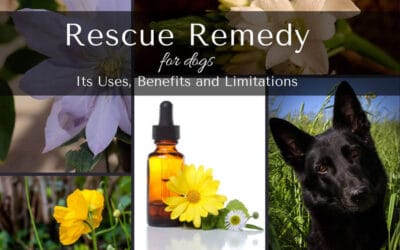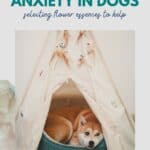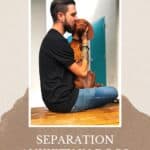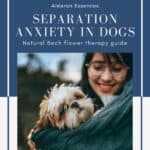When treating a complicated issue like Canine Separation Anxiety, natural therapies like flower remedies can offer fresh hope. Learn which Bach flower remedies reduce anxiety, over-attachment, and panic, help level out your dog’s emotions, and reduce the symptoms of Canine Separation Anxiety.
The Problem of Separation Anxiety in Dogs
​Canine Separation Anxiety is a challenge faced by many dog owners. It affects all breeds and mixed breeds, being somewhat more prevalent in mixes. Of all dogs taken to veterinary behavior consultants, 20 to 40 percent are there for Separation Anxiety treatment [source].
It is undoubtedly a difficult problem to live with. It’s painful to watch a dog we love become visibly anxious and distressed whenever we leave them alone.
As a dog trainer, I’ve worked with people who scheduled their entire lives around never leaving their dog without supervision (something not all of us can do), and others who have spent unmentionable amounts of money replacing damaged or destroyed personal items, furniture, even doors, floors, and walls.
This is a behavior issue that can be exhausting for both dog and owner.
​
Can Separation Anxiety in dogs be cured?
For many dogs, the answer is yes. That’s not to say it doesn’t take work: careful training, desensitization and management are needed to reduce anxiety and shift an overly-needy relationship between dog and owner in a healthier direction.
To “fix†Separation Anxiety, the dog’s perspective must change: the extreme, roller-coaster emotions driving anxious and often destructive behavior must be gently leveled out. And this is where flower essences can play such an important role.
Flower essences (also called flower remedies) excel at balancing extreme, out-of-balance emotions. While often overlooked when it comes to dog behavior, they are a safe, gentle, and surprisingly reliable tool for any emotion-driven behavior or training problem. (See my article, How Flower Essences Can Improve Dog Behavior, if you’re not familiar with this natural therapy.)
​
Canine Separation Anxiety Symptoms
First, what does Separation Anxiety in dogs look like? When we talk about Separation Anxiety, we’re not describing a set of behaviors that occurs across the board in every dog. The term Separation Anxiety is more of a catch-all label that encompasses a variety of symptoms, each with a range of expression from mild to severe. Let’s delve into what behaviors may be present:
- Your dog paces anxiously or becomes clingy, following you everywhere before you leave. He may find a place to “hide out†that feels secure (or to avoid being put in a crate or other confinement).
- Your dog pants heavily, drools, and/or trembles before or after you leave home. (You may find your dog’s bedding soaked with saliva when you arrive back home.)
- Your dog barks, howls, and/or whines much or all of the time he’s alone, and it doesn’t improve over time. (It’s very common for dogs to vocalize when left alone, particularly when it’s a new experience. Most dogs will do this only briefly, and will discontinue the behavior as they get used to being left by themselves.)
- Your dog acts up in an attempt to prevent you from leaving – attacking your shoes, humping your leg, “climbing†your body, stealing items to distract you, etc., as you try to leave.
- Your dog is destructive (usually this means chewing or shredding) when left alone or when left in his crate.
- Your dog panics when left alone and/or in the crate. (This may include house-training accidents, including diarrhea, if the panic is severe. A truly panicked dog may also inadvertently injure himself.)
- Your dog tries to escape his crate, room, or other confinement when left alone. Escape behavior can be panic-driven, a learned behavior, or just plain determination.
- Your dog expresses distress through repetitive, self-calming behaviors like flank sucking or paw licking.
Â
Selecting Flower Essences for Canine Separation Anxiety
When selecting appropriate flower essences, do your best to look beyond the behavioral symptoms to the emotional motivation behind them.
Keep in mind that behavior is not the same as emotion. For instance, a lonely dog may comfort itself by chewing items that smell like his favorite person. A frustrated, under-exercised dog may chew to relieve pent-up energy, Both dogs chew during separation, but the emotion behind the behavior is different for each dog, so the essences to help them would be different. (For more, see my article on how to select flower essences for dogs.)
How many flower essences at once? AÂ good rule of thumb is to limit the number of essences used in any one formula to no more than six at a time. While it may be tempting to pick every essence that seems remotely applicable, a more narrowly focused formula is more likely to be helpful, and you will have a better idea which essences are working for your dog. (More on this in my how-to guide on making a flower essence blend for your dog.)
And – as with any serious dog behavior concern – flower essences for separation anxiety should be used in conjunction with, and as an aid to, a sound, behavior-based training program. Particularly with an issue as complex as this, it is unlikely that any one therapy, by itself, will “cure†the problem.
“Flower essences excel at balancing extreme, out-of-balance emotions. While often overlooked when it comes to dog behavior, they are a safe, reliable therapy for an emotion-driven issue like Separation Anxiety.”
Combining and Using Flower Essences for Dogs
Once you’ve narrowed down your essences, either buy them individually and blend your own combination, or have it blended for you with an online service.
​If you haven’t used flower essences before, they are reassuringly simple to use. Just give a few drops to your dog – on a treat or snack, in his dinner, and/or straight into his mouth – 3 or 4 times every day. (Consistency is key to see results.)
You should see improvements start within 3 to 14 days and gradually build over time.Â
Bach Flower Essences for Separation Anxiety Symptoms in Dogs
​Now let’s look at some obvious, and maybe not so obvious, Bach flower essences to help reduce your dog’s separation anxiety.

Â
Flower essences for stress and trauma in dogs
Rescue Remedy – always appropriate for alleviating the stress and anxiety associated with traumatic events. Rescue Remedy (AKA Five Flower Formula) is not a single essence, but a combination of five Bach essences that, together, have proven to be highly effective at alleviating severe stress during traumatic events. **Rescue Remedy is typically counted as a single essence when combining with other Bach remedies.
Â
Bach Flowers for fear and panic in dogs
Mimulus – the remedy for specific, known fears. Whether there has been a specific, frightening experience at home that has left your dog feeling less than secure when alone, or your dog associates being home alone, as new, unfamiliar, and therefore frightening, Mimulus is an excellent choice.
Aspen – helpful to alleviate the general anxiety and jitteriness often seen as the owner prepares to leave.
Rock Rose – indicated when there is outright panic or panicky feelings. Dogs that flee in terror are experiencing panic. So are dogs that “freeze up†in their fear.
Elm – a useful helper essence when the dog appears to feel overwhelmed by the situation or task.
Larch – improves confidence and ability to handle new or difficult situations. I often combine Larch with Mimulus, since mild fear can easily be confused with lack of confidence (and vice versa) in dogs. Most appropriate when the dog’s anxiety is mild, without panic or destructiveness.

Bach flowers for clingy, needy, over-attached dogs
Chicory – the essence of choice when normal, desirable attachment and loyalty has tipped over into clingy dependency or even outright controlling behaviors. Chicory helps “loosen the apron stringsâ€, restoring normal emotional attachment.
Heather – combines well with Chicory. Indicated when the dog exhibits noisy attention-seeking, such as barking, whining, moaning, and groaning.
Red Chestnut – helps the dog that experiences fear and concern, not for himself, but for the owner. While this is not a common emotional motivation for canine separation anxiety, when present, it can be powerful.
Honeysuckle – a good choice for the dog that “pines away†for the owner when left behind.
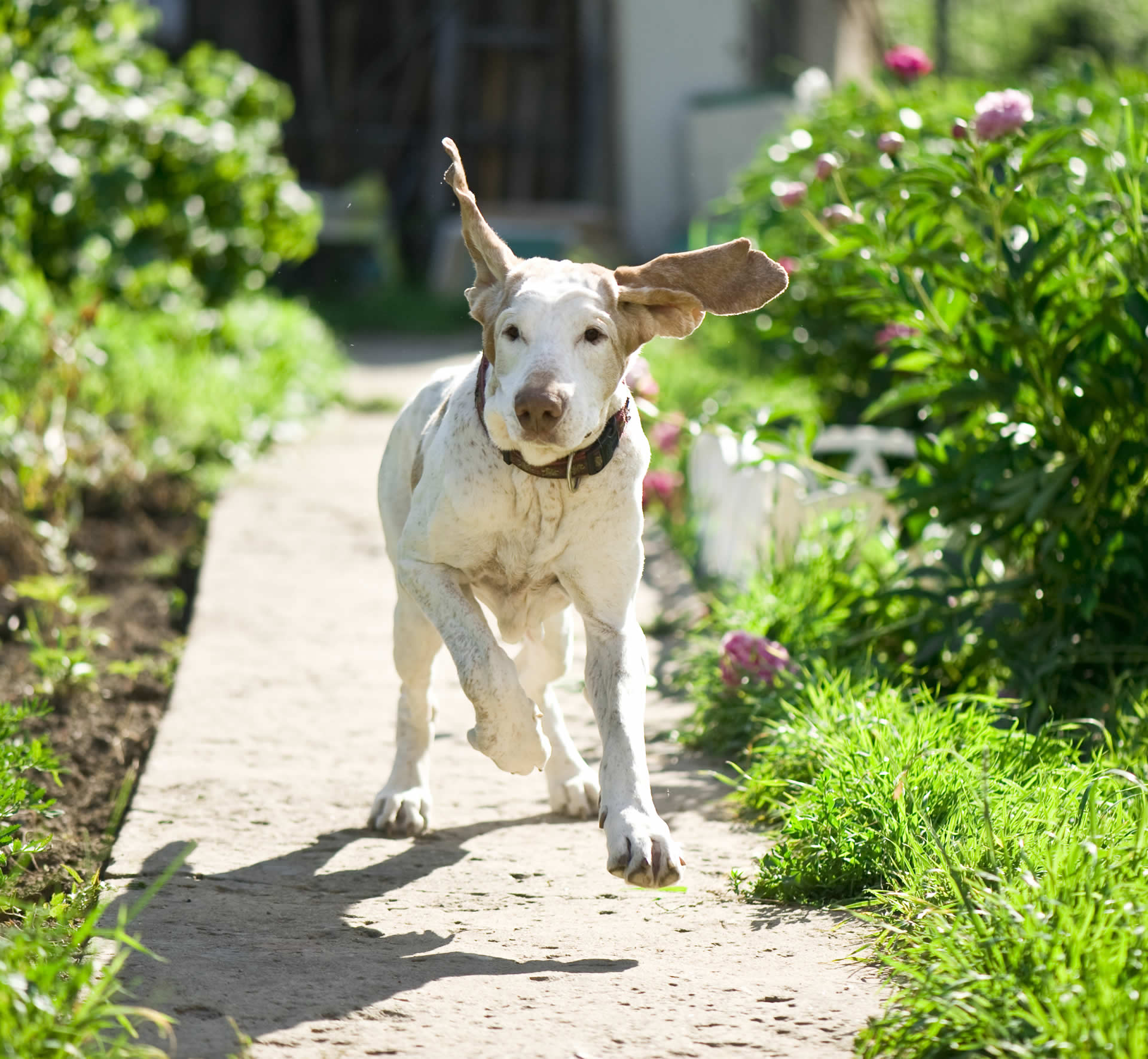
Â
Bach flower remedies for destructive, self-mutilating, and severe escape behaviors in dogs
Vervain – moderates intense, driven behavior. Indicated with high-strung personalities, dogs that require large amounts of physical exercise and/or mental stimulation, as well as when the intensity of the negative behavior is particularly high. Vervain typically combines well with Impatiens and Cherry Plum.
Impatiens – excellent for moderating frustration-driven behaviors. Very useful for dogs that break out of confinement, even to the point of injury. In addition, Dr. Bach recommended Impatiens for “nerve conditionsâ€, including physical trembling.
Cherry Plum – indicated when there is a loss of control. This can be loss of bodily control (housetraining accidents that happen soon after the owner leaves, dogs that get “nervous diarrheaâ€, lose their anal glands, or urinate out of fear); or loss of emotional control (dogs that injure themselves breaking through crates, doors, or windows; dogs that destroy – not just chew – furniture, walls, personal items, etc. while the owner is away).
Chestnut Bud – very useful for habitual and repetitive behaviors. Chestnut Bud can help any time the dog seems resistant to changing routines, and should be considered when there are self-harmful behaviors (use with White Chestnut).
White Chestnut – restores a “calm mindâ€. Indicated for the dog whose internal worrying and fretting lead to self-harmful behaviors (see also Chestnut Bud) or externally destructive behaviors.
​
Conclusion
As you can see, canine separation anxiety is a complex issue. The separation-related behaviors a dog displays will depend on largely his emotional state. Bach flower essences, by bringing emotional extremes back into balance, can be highly useful as part of an overall training and behavior improvement program, reducing over-dependency, anxiety, stress, and panic when home alone.
I hope you found this article interesting and useful. If so, please share it with your friends!
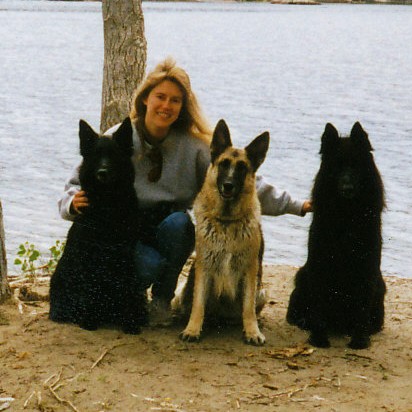
Julie Cantrell BSc is a professional dog trainer and canine behavior consultant who’s logged many thousands of hours training dogs and teaching owners since 1990. Flower essences have been part of her work with canine behavior since 1994. (bio)


